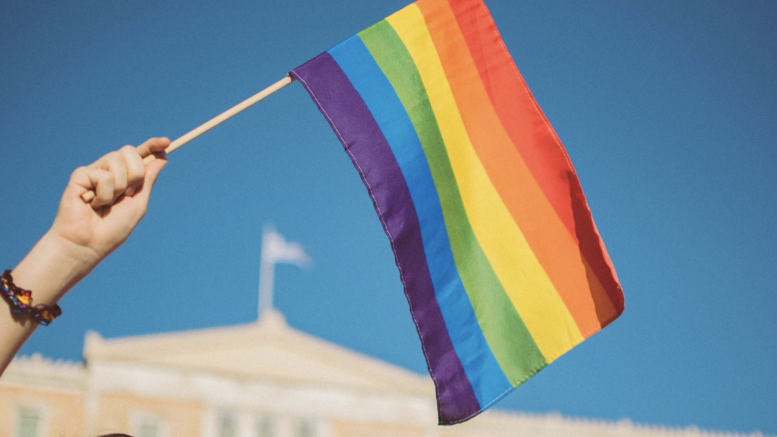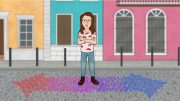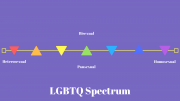Staff Writer/ Laura Antunez
Although the influence of the LGBTQAI+ has become more prominent and accepted, there is still a lot of work to be done in abolishing heteronormative ideals, especially in the case of bisexuals.
“I’ve never been scrutinized [for coming out as bisexual], just have had expectations imposed on me,” said Leslie Gomez-Gonzalez, a 21-year-old FIU student majoring in studio art.
The struggle of bisexuality is intricate and comes with certain prejudices that are not ubiquitous to the rest of the LGBTQAI+ community.
“A lot of bi people struggle with the identity part of other people’s expectations of what bi means,” said Associate Director of LGBTQA Initiatives at FIU, Erica Friedman. “Bisexuality can be anything as long as you have some kind of attraction to more than one gender.”
According to a 2015 article, bisexuals also often face criticism from both heterosexual and gay and lesbian communities. Some of the criticisms reported are that the individual is in denial of being gay, “hasn’t fully come out yet” or, refusing to come out to retain their ‘heterosexual privilege.’
“As discussed by participants, the reality of their bisexual identity often entails having to work to make their identity understood, seen, and accepted, not only by strangers but by their loved ones – friends, family members, and even partners,” said a study by Bostwick and Hequembourg.
Opposition to bisexuality takes two forms, biphobia and monosexism. Biphobia is discrimination and prejudice towards bisexuals; and according to Friedman, monosexism is favoring and normalizing people who are attracted to one gender and not multiple genders.
Bisexuality can also sometimes come with different obstacles for men and women. “I think there are slightly nuanced experiences for both [bisexual men and bisexual women] but it doesn’t mean one is more oppressed than the other,” said Friedman.
She said that although women are more accepted as bisexual than men, bisexual women are still viewed through a heteronormative lens.
“[Bisexuality in women is more accepted] but it’s within a container of the perception of men and what women are doing for men by being bi,” she said.
A 24-year-old bisexual woman who chose to stay anonymous said she was inquired for a threesome upon revealing her sexuality to a guy on Tinder, and when he asked her why she stopped talking to him, she said it was because he had fetishized her bisexuality.
In a similar fashion, a 23-year-old bisexual female who chose to remain anonymous said that her previous partner was especially accusatory towards her because of her bisexuality, and thought she was more likely to cheat because of it.
“There’s a stereotype that bisexual people are more sexual simply because they’re attracted to more genders than the average person,” said Friedman. “People still have standards and types of people that they like and those kinds of limitations in restrictions on who you’re attracted to.”
Meanwhile, men face stricter rules in proving their bisexuality because of this notion that men can only be gay or straight, but not be interested in both.
“[It feels like] you have to be 50/50 romantically and sexually interested in both men and women, specifically, in order to be a valid bisexual,” said Delaney Imar, a 26-year-old ESL, English as a second language, teacher. “Like these very specific boxes have to be checked in order to be valid and I don’t think that’s fair.”
Some studies have shown that bisexual youths have higher levels of depression than both heterosexuals, and gays and lesbians. Those that were interviewed in the study said that even though their sexuality has been validated by friends, they still find it hard to validate it within themselves.
This year on May 17 was the 30th anniversary of the World Health Organization (WHO) declassifying homosexuality as a mental disorder. The day was officially memorialized as International Day Against Homophobia, Transphobia, and Biphobia in 2004.
Imar said although she is accepting of others, it still feels taboo to have those feelings for a woman and accept the feeling within herself.
Gomez-Gonzalez said she is trying to focus on her own acceptance and not invalidate her own experiences.
“[The LGBTQAI+ community is] traditionally a community that tries to accept and bring in people from the margins whose genders and sexualities are not generally known or accepted,” said Friedman. “I have a lot of pride in the fact that we try to represent and include everyone and we’re still learning.”






Be the first to comment on "Where Does Bisexuality Fit In LGBTQAI+? Somewhere In The Middle"